Blocked outside drains can cause a host of problems, ranging from unpleasant odors to potential flooding on your property. Identifying the signs of a blockage early can save you time, money, and unnecessary stress.
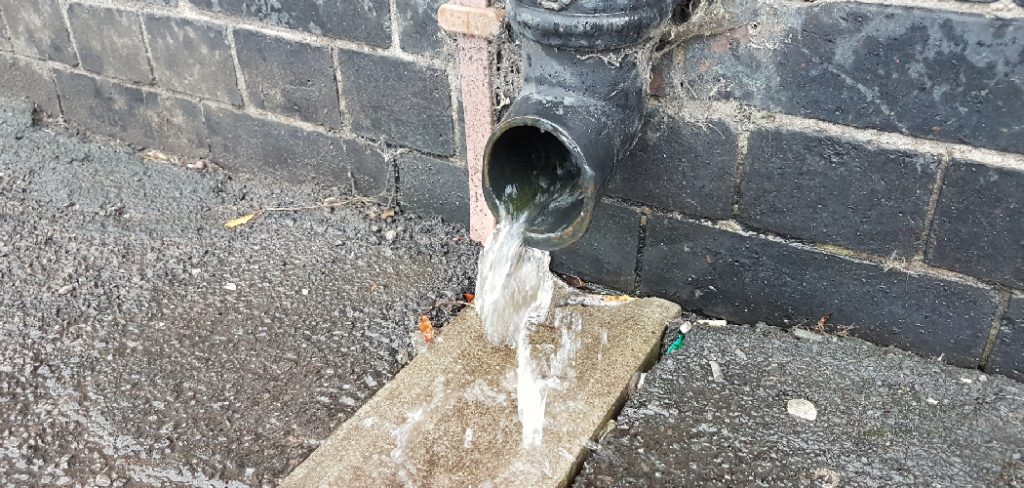
This guide on how to tell if outside drain is blocked will help you understand the key indicators of a blocked drain and provide you with the steps to address the issue effectively.
Why Do Outside Drains Get Blocked?
Before we dive into how to tell if your outside drain is blocked, it’s essential to understand the reasons behind a blockage. Some of the main causes include:
Foreign Objects:
Objects such as leaves, twigs, and debris can accumulate in your drains and cause a blockage. It’s crucial to regularly clear any visible debris from your outside drain to prevent blockages.
Tree Roots:
Tree roots are a common culprit for blocked drains. Over time, they can grow into your pipes and cause clogs or even damage the pipes themselves.
Grease and Fat Buildup:
Grease, fat, and oil should never be poured down the drain as they can solidify and create a blockage in your pipes.
8 Step-by-step Guidelines on How to Tell if Outside Drain is Blocked
Step 1: Check for Unpleasant Odors
One of the easiest ways to tell if your outside drain is blocked is by noticing any unusual smells. A blockage often leads to trapped waste and stagnant water, which emit foul odors. Stand near your outside drain and take note of any strong, unpleasant smells coming from it.
This can be an early indicator that something is obstructing the flow within your drainage system.
Step 2: Look for Standing Water
Another clear sign of a blocked outside drain is the presence of standing water. If the water in your drain does not flow away as it should and instead pools around the drain or in nearby areas, it usually indicates a blockage. Inspect the area around your outside drains after a period of rain or while running water through it.
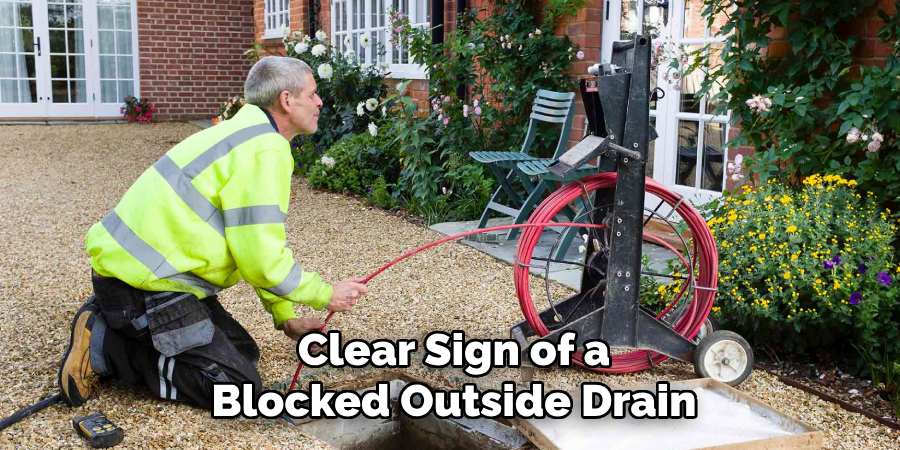
The longer the water remains stagnant, the more urgent it is to address the issue to avoid potential flooding or damage to your property.
Step 3: Check for Slow Drainage
Slow drainage is another common sign of a blocked outside drain. If water takes longer than usual to flow away after entering the drain, it could indicate a partial blockage. You can test this by running water from a hose or pouring a bucket of water into the drain to see how quickly it drains away.
Slow drainage often means that debris is beginning to build up, and addressing it promptly can prevent the blockage from worsening.
Step 4: Inspect the Drain Cover
The drain cover is the first physical barrier preventing debris from entering your drainage system, but it can also become a collection point for blockages. Carefully lift or inspect the drain cover to check if there is any visible accumulation of leaves, dirt, or other debris.
Pay attention to any signs of buildup directly underneath the cover as well. If the cover is obstructed, cleaning it off may restore proper flow and mitigate further issues. Always wear gloves while inspecting and handling the drain cover to protect your hands from dirt and sharp edges.
Step 5: Use a Plunger
If the blockage persists, using a plunger can often help to dislodge it. Place the plunger securely over the drain opening, ensuring that it creates a seal, and then pump it up and down several times. This action generates pressure, which can help break up or move the debris causing the clog. After plunging, check if the water begins to flow more freely.
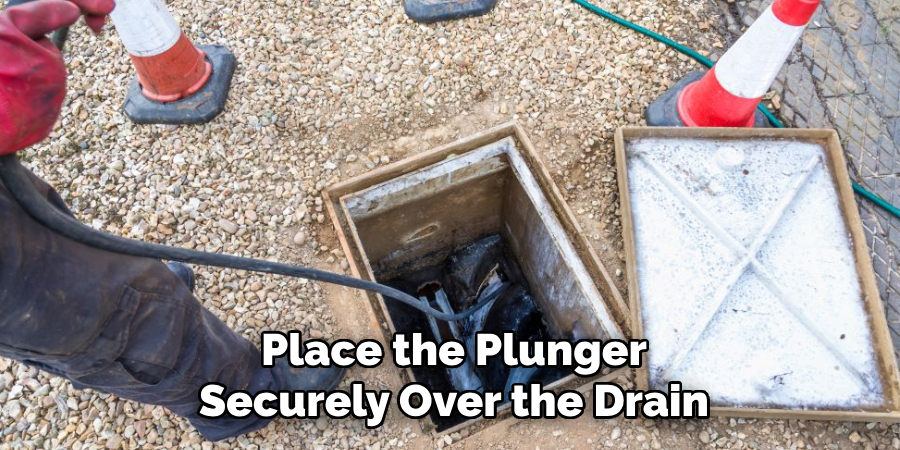
If successful, the blockage will be cleared, but if the issue remains, further investigation or tools may be needed. Always ensure the area is clean and wear gloves during this process to protect your hands.
Step 6: Try Natural Solutions
If you prefer a more environmentally friendly option, there are several natural solutions for clearing blockages in your outside drain. These include pouring boiling water mixed with baking soda or vinegar down the drain to dissolve any buildup. You can also try using a mixture of salt and hot water or using biological cleaners specifically designed for breaking down blockages without harsh chemicals.
It’s essential to note that natural solutions may not be as effective on severe or persistent blockages and may require multiple attempts.
Step 7: Use Drain Rods
For more severe blockages, you may need to use drain rods. These long, flexible poles have attached attachments that allow them to navigate through your drainage system and break up obstructions. Insert the rod into the outside drain and twist it to push through the clog.
Always follow the manufacturer’s instructions and safety precautions when using drain rods to avoid damaging your pipes or yourself.
Step 8: Seek Professional Help
If none of the above steps work, it’s best to seek professional help. A trained plumber will have the necessary tools and expertise to effectively identify and resolve any blockages in your outside drain. They can also advise you on potential future preventive measures to avoid similar issues.
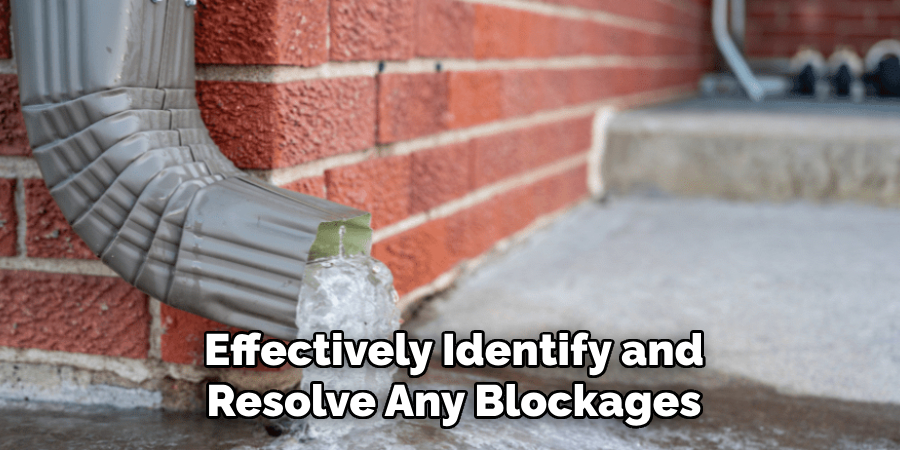
Following these guidelines on how to tell if outside drain is blocked can help you identify and resolve a blocked outside drain promptly, preventing potential damage and saving you time and money.
Regular maintenance of your outside drains can also help prevent blockages from occurring in the first place. Remember to always take safety precautions and wear protective gear when attempting to unclog your drains.
Now that you know how to tell if your outside drain is blocked, you can address any issues quickly and effectively.
Happy draining!
Do You Need to Get Support From Professionals?
While many blocked outside drains can be cleared using the steps outlined above, there are times when seeking professional help becomes essential.
If you’ve tried multiple methods and the blockage persists, it may indicate a more serious issue, such as damage to the pipes, extensive root intrusion, or a stubborn clog deep within the drainage system. These situations often require specialized tools and expertise that professionals can provide.
Professional drain cleaning services have access to advanced equipment, such as high-pressure water jetting tools and CCTV drain cameras, which can swiftly identify and resolve complex blockages. Additionally, professional plumbers can ensure your entire drainage system is inspected and restored to optimal function while preventing further damage to your property.
It’s also worth reaching out to experts if you notice recurring blockages, as this may suggest an underlying issue that needs attention. By engaging professionals, you’ll save time, reduce stress, and avoid potential future costs associated with unresolved drain problems. When in doubt, never hesitate to contact a reputable plumbing service to assess your drainage needs.
Additional Tips
- To prevent future blockages, regularly inspect and clean your outside drain, especially after heavy rainfall or windy conditions.
- Avoid flushing large items down the drain, including wipes, sanitary products, and food scraps.
- Install a drain strainer to catch any debris before it enters your drainage system.
- Consider hiring professional plumbing services for routine maintenance and inspections of your outside drains to ensure they are in good working condition.
- If your outside drain is frequently blocked, consider installing a grate or cover to prevent debris from entering.
- Remember to always use caution and proper safety measures when attempting to clear a blockage in your outside drain, and seek professional help if needed.
By following these additional tips and properly maintaining your outside drains, you can minimize the chances of experiencing future blockages and keep your drainage system running smoothly. So next time you notice any unusual smells, standing water, or slow drainage in your outside drain, use these steps to determine if it’s blocked and take appropriate action. Happy draining!
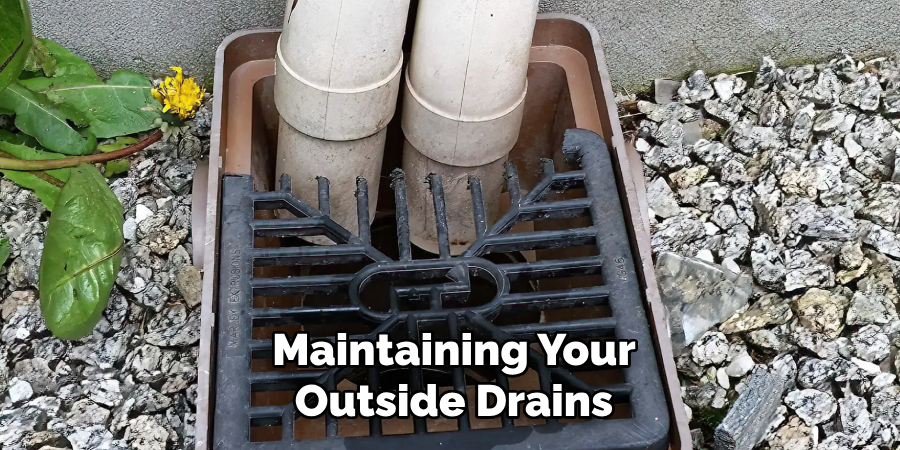
Frequently Asked Questions
Q: How Can I Prevent Outside Drain Blockages?
A: Regularly maintaining your outside drains and avoiding pouring grease, fat, and oil down the drain can help prevent blockages. Additionally, consider installing a mesh or grate over the drain cover to catch debris before it enters your drainage system.
Q: Can I Use Chemical Drain Cleaners to Clear a Blocked Outside Drain?
A: While chemical drain cleaners may provide a quick fix, they can also damage your pipes and harm the environment. It’s best to stick to natural solutions or seek professional help if the blockage persists.
Q: What Should I Do If The Blockage is Severe?
A: If you are unable to clear the blockage with household methods, it’s best to call a professional plumber. Attempting to remove severe blockages yourself could cause further damage or personal injury.
Conclusion
Blocked outside drains can be a significant inconvenience, but with the right knowledge and steps, they are manageable. By regularly inspecting your drains and addressing early signs of blockages such as unpleasant odors, standing water, or slow drainage, you can prevent more serious issues from arising.
Natural solutions and tools like plungers or drain rods can often resolve minor blockages, but for stubborn or recurring problems, seeking professional assistance is always the best course of action.
Maintaining your drains through periodic cleaning and avoiding practices like pouring grease or fat down the drain will go a long way in keeping your drainage system functioning smoothly. Taking proactive measures today can save you time, money, and frustration in the future. Thanks for reading this article on how to tell if outside drain is blocked.
About the Author
Adrian Green is a passionate woodworking enthusiast who has dedicated his life to the craft of woodworking. From his early days working alongside his father in the family woodworking shop, Adrian has honed his skills and developed a deep love for creating beautiful, functional pieces with his hands. As the voice behind The Woodenify Blog, he shares his knowledge, tips, and inspiration with fellow woodworkers of all skill levels, helping them build confidence in their abilities while learning new techniques.
Professional Focus
- Specializes in DIY woodworking projects, from furniture making to home décor.
- Provides step-by-step guides, tips, and practical tutorials for woodworkers at any skill level.
- Focused on empowering readers with confidence and knowledge through easy-to-follow instructions and hands-on techniques.
- Passionate about building a community where makers can share, learn, and grow together in the world of woodworking.
Education History
University of Craft and Design – Bachelor of Fine Arts (BFA) in Woodworking and Furniture Design
Woodworking Apprenticeships – Gained extensive hands-on experience through various workshops and mentorships with seasoned craftsmen, refining carpentry and furniture-making skills.
Expertise
- DIY woodworking, carpentry, furniture making, and home décor projects.
- Creating clear, accessible tutorials and guides for beginner to advanced woodworkers.
- Helping readers experience the satisfaction and fulfillment of turning raw materials into stunning finished products.
